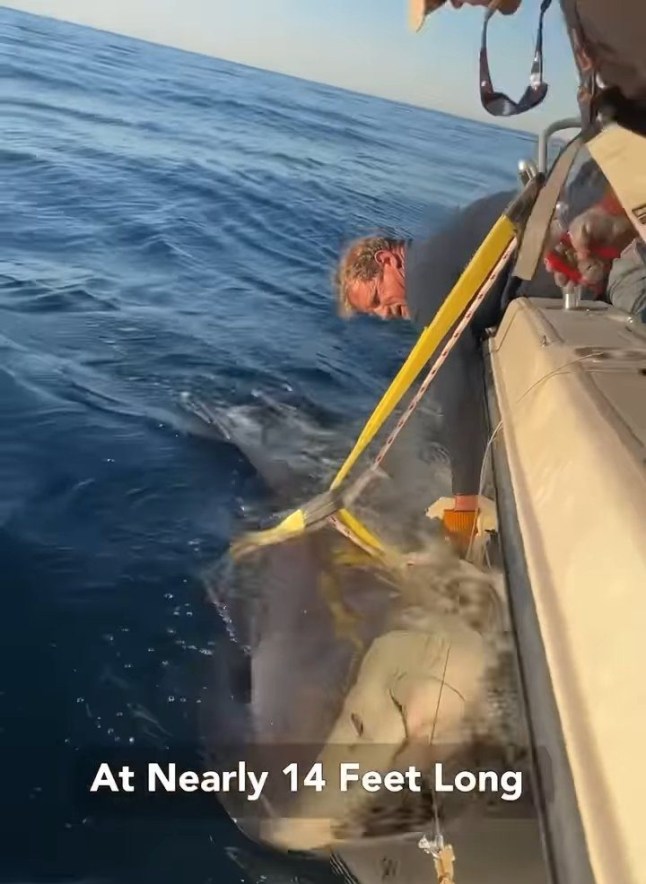Ocean researchers have found the largest male great white shark ever recorded.
The shark, named Contender, was first tagged by research group OCEARCH on January 17, off the coast of Georgia.
Since then the group has been tracking its movements as he swims around the Atlantic Ocean, and this week he’s been found in Florida’s waters.
Getting up close and personal with Contender, researchers have found he is 13.8ft (4.2m) long and weighs an estimated 1,653lb (749kg) – leading OCEARCH to describe him as a ‘true ocean giant’.
They’ve also collected biological samples from him, including from is urogenital system, which will be analysed and used in other research.
The tag will track Contender’s movement for five years, and it’s possible to view his movements online as well as the other sharks tagged by OCEARCH.



The research group said on social media: ‘Contender is the largest male white shark ever caught, SPOT tagged, released and now studied in the NW Atlantic white shark population!
‘The SPOT tag deployed on Contender will provide valuable real-time data for approximately five years, helping us track his movements and understand his migration patterns.
‘Additionally, we’ve collected important biological samples, including urogenital material, which are currently being analysed.’
Contender was named after Contender Boats, who provide boats to OSEARCH for their research missions.
So far, he’s swam around 199miles (320km) since he was tagged last month.
Great white sharks, or carcharodon carcharias, can live for more than 70 years and are named for their white underbellies.
They can swim at up to 35mph (50kmph) and have seven rows of serrated teeth, which function like a conveyor belt to replace any teeth lost during daily wear and tear.
They are the world’s largest predatory fish, and are classed as ‘vulnerable’ on the International Union for Conservation of Nature (IUCN) Red List of Threatened Species.
Thanks to the 1975 film Jaws, great whites are among the most recognisable shark species on the planet.
Despite the negative publicity, it’s pretty rare for humans to be killed by sharks – the Florida Museum of Natural History’s international shark attack file investigated 120 shark-human interactions globally in 2023, 20 of which were fatal.
They’re most frequently associated with Australia and South Africa, but can be found in temperate and tropical waters all over the world.
Get in touch with our news team by emailing us at webnews@metro.co.uk.
For more stories like this, check our news page.
MORE: Jean-Philippe Mateta can fire improving Crystal Palace to long FA Cup run
MORE: Angela Rayner denies being ‘aggressive’ in Grenfell Tower demolition meeting
MORE: Print trends are in full swing for 2025 and we have whittled down the best trends










